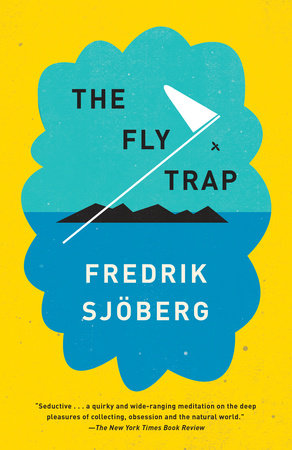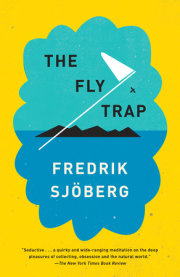Chapter 3 A Trap in Rangoon
Many years ago, before the island and the theatre, I took a passenger barge up the mighty Congo River. What an adventure! What stories I would tell! About freedom! But it didn’t happen. I never managed to say much more than that the forests were vast and the river as broad as Kalmar Sound. And that I’d been there. So it goes when you travel for the sake of something to say. Your eyes go weak. All I could have written were endless disquisitions about homesickness. So I kept my mouth shut.
It’s a different story with Ladäng Creek, I thought aloud to myself one morning among the bird-cherry blossoms. Then something remarkable happened.
I was in the process of rigging up my big California fly trap between a couple of over-blooming sallow bushes down by the creek—a complicated manoeuvre—when suddenly a complete stranger appeared as if from nowhere. He just stepped straight out of the lush June greenery and addressed me politely and apologetically in English. A wood warbler sang its silver song somewhere in the trembling crown of a nervous aspen, and a pike splashed in the shallow water of the creek. The mosquitoes were stubborn in the shade. He said it was me he was looking for.
“I’m looking for you” were his exact words.
I tried to accept this as the most natural thing in the world, as if strangers could be expected to seek me out wherever I might be. But I failed completely. Instead I stood there like an idiot among the sedge tussocks, amazed and speechless.
This man was in fact, and still is, the only person I’ve ever encountered by Ladäng Creek. If you want to be left in peace, it’s a good place to go. Islanders never go there, and the summer people don’t know the place exists. The paths that once led there have now vanished. The name of the creek is not even on the map. For that matter, it’s not much of a waterway, more of a ditch—overgrown, silted up and periodically dry. The meadow barns that are said to have stood there are long gone, as indeed are the meadows. Slowly but surely they’ve been invaded by fir, aspen, birch and alder. All the same, it’s a very pretty place, as rich and spacious as a cathedral when the marsh marigolds bloom in the spring. Deer meet down by the creek, sometimes moose, but never people. Except that day.
In the Middle Ages, Ladäng Creek was the channel boats used to sail to a village at the far end of the bay, which rising land elevations eventually turned into a freshwater lake. The village is still there. It’s where we live. How old it is no one knows, but there were probably people living here as early as Viking times. The inner parts of the long bay, where the humus-brown water is very deep, must have made an ideal harbour—a sanctuary that seafarers with base intentions surely hesitated to venture into. The granite cliff drops straight into the water. The village was easily defended against attackers from the open ocean to the east.
What ships anchored here outside my window? Who rowed up the creek where today a pike can hardly make its way?
“I’m looking for you.”
Copyright © 2015 by Fredrik Sjöberg. All rights reserved. No part of this excerpt may be reproduced or reprinted without permission in writing from the publisher.








